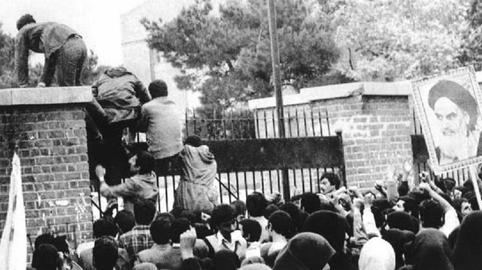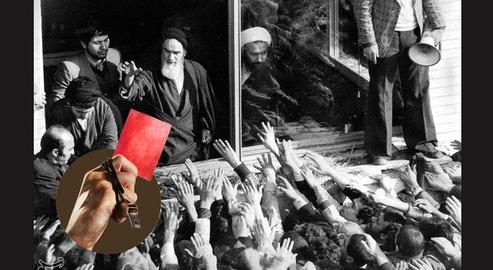The outcome of any American election has obvious consequences for many people all over the world. Few are affected more than Iranians since US presidents have often had sharply divergent policies on Iran, perhaps no shift has been more dramatic than the one that occurred last month when Joe Biden succeeded Donald Trump.
For Iranians, Biden’s inauguration was reminiscent of another inauguration that happened on the very same day 40 years ago. When Ronald Reagan assumed the presidency on January 20, 1981, events in Iran cast a long shadow over the American capital. As the sunny Californian ex-governor initiated a new era in American history, the US hostages who had been held for Iran for 444 days were finally welcomed back home. Their return would be associated with Reagan, but it was really the Jimmy Carter administration that had secured their release by signing the Algiers Accords in the eponymous capital of Algeria on January 19, Carter’s very last day in office.
Mediated by Algeria’s non-aligned government, US deputy secretary of state Warren Christopher had negotiated with representatives of the Islamic Republic and signed the Algiers Accords a day before Reagan’s inauguration. Iran agreed to free the hostages in exchange for a US promise of non-interference in Iran’s ‘internal affairs’ and the release of Iran’s frozen assets. Iran also agreed to pay its American and Western debtors and an Iran-United States Claims Tribunal (IUCT) was created in the Hague to arbitrate between American and Iranian citizens and governments and their many financial disputes.
Forty years on, what’s the legacy of Algiers Accords? And how can the legacy help us to understand Iran-US relations today? To answer this question I went to Dr Christian Emery, a historian at University College London. He hails from Birmingham and got all his degrees, from a BA in 2003 to a PhD in 2011, from this city’s university. He has also taught in major British universities such as Warwick, Nottingham, Plymouth and the London School of Economics (LSE) before taking up his current position at UCL last year.
Emery wrote his doctoral dissertation on US foreign policy and the 1979 Islamic Revolution. It was published as a book in 2013. In his academic articles, he focuses on US’s Iran policy in the last years of the Carter administration. I ask him about the likely trajectory of US-Iranian relations under Biden.
“I think it’s going to be tough for him to do much on Iran policy as he’s so preoccupied with Covid-19 and overturning Trump’s domestic policies,” Emery says. “Both sides might also want to see what happens in the upcoming Iranian presidential election.”
“There are compelling structural reasons why both sides desire to come back to the deal, but the choreography of doing so will be tough to line up. History since the Algiers Accords suggests that sanctions are much harder to unpick than enact. And even when sanctions are removed it takes considerable time for business and market confidence to grow – in this sense the capricious nature of Trump’s foreign policy has booby-trapped Biden’s Iran policy. Why invest in Iran when another Trumpian Republican, if not Trump himself, could be elected in 4 years and take a wrecking ball to whatever is renegotiated?”
Cold War Legacies
One important difference between the world of 1981 and that of 2021 is the disappearance of the global rivalry that animated actors around the world: the Cold War. Emery’s work has done much to place the Iran-US relations in the context of the Cold War; a task also done by other historians of Iran like LSE’s Roham Alvand, whose Nixon, Shah and Kissinger has become a classic on Cold War syllabi.
Describing the Cold War as “the all-encompassing lens through which America’s interests in Iran were defined and pursued,” Emery says it is this global conflict that explains both Shah’s centrality to American strategy, and why Carter “accepted the revolution and tried to rebuild some kind of new relationship based on the assumption that Iran still feared its powerful northern neighbor.” It is also why he was loath to consider military action following the hostage crisis, “worried that this would either destabilize Iran, push it towards Moscow, or jeopardize a future US-Iranian rapprochement.”
Cold War thinking also led to the persistent belief that “eventually a more moderate faction that understood the security benefits of US-Iranian cooperation would emerge”; a belief that helped cause the Iran-Contra affair during the Reagan years. “In many ways,” Emery adds, “this binary division of Iranian political actors as either ‘radical’ or ‘moderate‘ was established very early on and still persists, with generally detrimental consequences for US policy in Iran.”
Going back to the Algiers Accords, Emery is clear that despite the official propaganda in Iran, “It’s extremely difficult to characterize the Algiers Accords as a triumph” for the regime.
“Let’s consider Iran’s aims,” he says. “Iran agreed to release the hostages in exchange for the United States unfreezing Iranian assets. Well, at the time of the hostage crisis it’s thought that Iran had about $12 billion in US banks. Iran received just under $3bn immediately after the hostages were released. $5.1bn was transferred to an escrow account to pay off Iranian debts to American and European banks and about $4bn was left in the US, tied up in lawsuits. In 2016 the Obama administration agreed to pay Iran roughly $1.7bn, consisting of $400 million of Iranian money placed in a Trust Fund to buy US military equipment in the 1970s, plus roughly $1.3 bn in interest (significantly below what Iran had claimed). But 40 years later, Iran is still trying to get billions [of dollars’ worth] of its assets back.” In simpler terms, “the economic cost of the hostage crisis continues to be huge for Iran”.
Iran’s goal of ending a US intervention in its affairs or ceasing of the US sanctions has also obviously not been realized. “It should be remembered that, aside from the asset freeze, the Carter administration’s sanctions were largely symbolic,” Emery says. “Since then the US has gone on to launch the most devastating (and I would argue reckless and misguided) economic sanctions in history. So, although Iran got credit for participating in what has been considered a generally successful model for international arbitration, its reason for existence was ultimately to repair the terrible damage Iran had inflicted on itself through the hostage crisis. So it’s not really a success story for Iran.”
In an academic article on the transatlantic and Cold War dynamics of Iran sanctions of the years immediately following the 1979 revolution, Emery explains how some of America’s allies were very reluctant to join the sanctions at the time. This was a far cry from the powerful sanctions regime that has seriously hampered the Iranian economy in more recent years.
When I ask of the curious simultaneity of the release of hostages with the Reagan’s inauguration, Emery is adamant that he won’t “touch the October Surprise theory with a barge-pole.” This theory relates to the possibility that Iranians purposefully delayed the release of hostages to influence the US 1980 presidential election results, perhaps while coordinating with the Reagan’s campaign. This version of events might seem like a conspiracy theory, but it has many prominent advocates such as Iran’s president at the time of the hostage-taking, Abolhasan Banisadr, and Gary Sick, then a staffer at Carter’s National Security Council.
Conspiracies, aside, did the hostage crisis help Reagan get elected and thus change the course of world history? Like most historians, Emery doesn’t like ‘what if’ questions.
“Going into 1980, Carter was already polling badly and the economy was in a terrible state,” he says. “He then faced the perfect storm of a primary challenge from [Senator] Ted Kennedy and a radical Republican opponent who proved adept at capturing the nation’s desire to lift the malaise that hung over 1970s America.”
According to Emery, three “clear errors” by Carter doomed his presidency, all three relating to Iran: allowing the Shah to seek medical treatment in the US; the ‘Rose Garden strategy’ (giving constant speeches and interviews from the White House) “which really played into Khomeini’s hands”; and the decision to authorize the ill-fated rescue mission of April 1980.
“Carter received spectacularly poor advice,” Emery says, “but he listened to it. I’m inclined to believe that any remaining chance of second term probably ended with those images of the smoking ruins of American helicopters.”
visit the accountability section
In this section of Iran Wire, you can contact the officials and launch your campaign for various problems


























comments